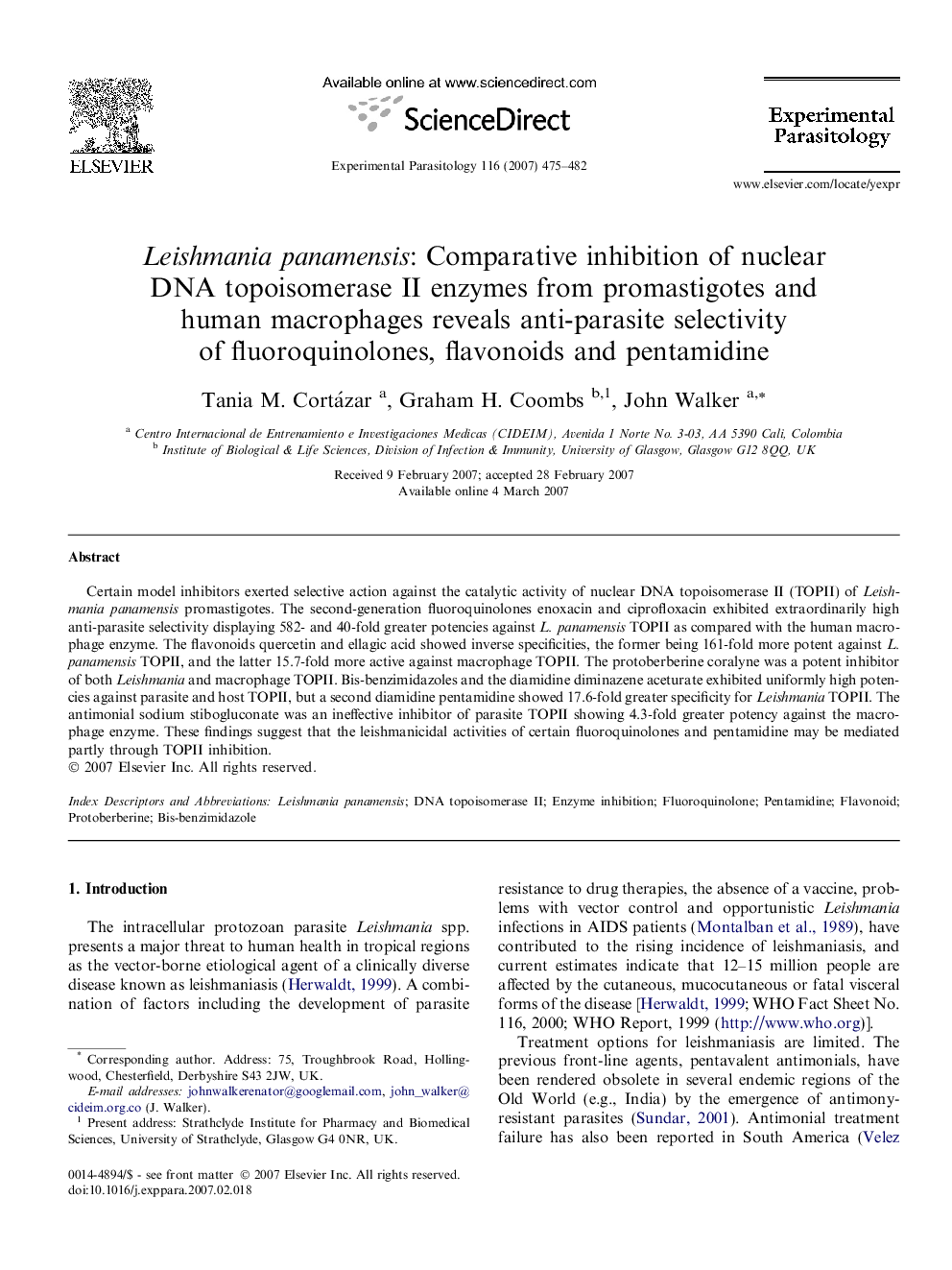| Article ID | Journal | Published Year | Pages | File Type |
|---|---|---|---|---|
| 6292426 | Experimental Parasitology | 2007 | 8 Pages |
Abstract
Certain model inhibitors exerted selective action against the catalytic activity of nuclear DNA topoisomerase II (TOPII) of Leishmania panamensis promastigotes. The second-generation fluoroquinolones enoxacin and ciprofloxacin exhibited extraordinarily high anti-parasite selectivity displaying 582- and 40-fold greater potencies against L. panamensis TOPII as compared with the human macrophage enzyme. The flavonoids quercetin and ellagic acid showed inverse specificities, the former being 161-fold more potent against L. panamensis TOPII, and the latter 15.7-fold more active against macrophage TOPII. The protoberberine coralyne was a potent inhibitor of both Leishmania and macrophage TOPII. Bis-benzimidazoles and the diamidine diminazene aceturate exhibited uniformly high potencies against parasite and host TOPII, but a second diamidine pentamidine showed 17.6-fold greater specificity for Leishmania TOPII. The antimonial sodium stibogluconate was an ineffective inhibitor of parasite TOPII showing 4.3-fold greater potency against the macrophage enzyme. These findings suggest that the leishmanicidal activities of certain fluoroquinolones and pentamidine may be mediated partly through TOPII inhibition.
Keywords
Related Topics
Life Sciences
Immunology and Microbiology
Parasitology
Authors
Tania M. Cortázar, Graham H. Coombs, John Walker,
